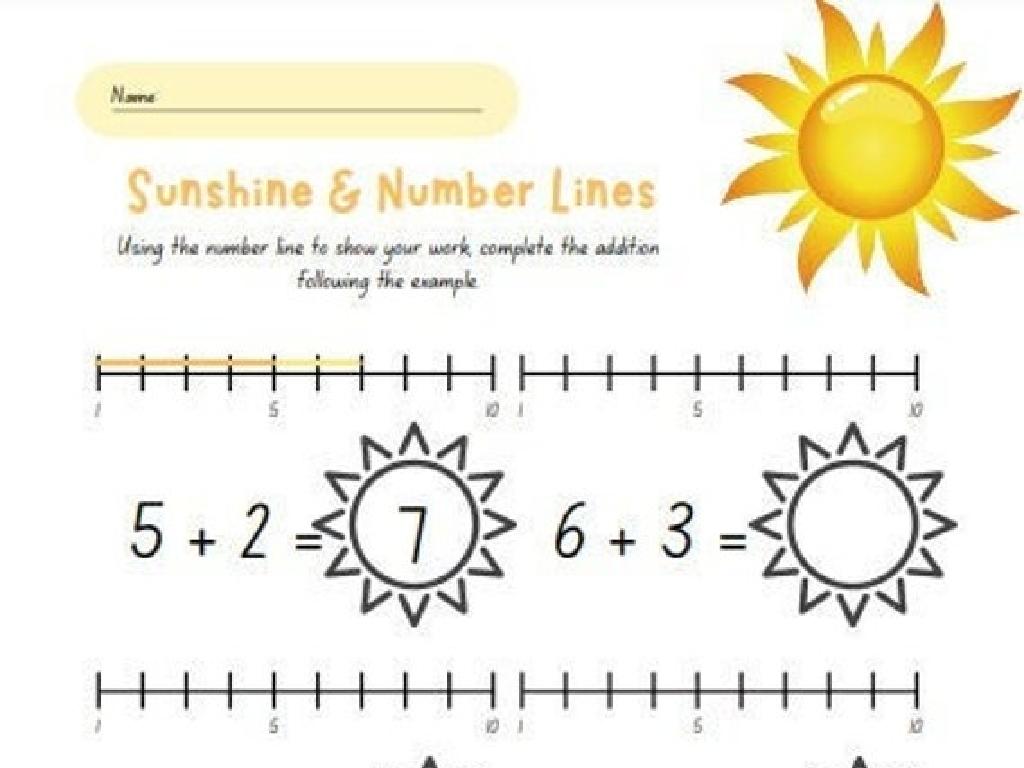Powers With Negative Bases
Subject: Math
Grade: Seventh grade
Topic: Exponents
Please LOG IN to download the presentation. Access is available to registered users only.
View More Content
Introduction to Exponents with Negative Bases
– Recap: What are exponents?
– Exponents show how many times to use a number in a multiplication.
– Base vs. Exponent
– Base is the number being multiplied; exponent tells how many times.
– Positive base examples
– For example, 3^2 means 3 multiplied by itself once: 3*3 = 9.
– Transition to negative bases
|
Begin with a brief review of exponents, emphasizing their role in representing repeated multiplication. Clarify the terms ‘base’ and ‘exponent,’ ensuring students understand the base is the number being multiplied, and the exponent indicates the number of times the multiplication occurs. Provide examples with positive bases to solidify their understanding. This sets the stage for introducing exponents with negative bases in subsequent slides, bridging familiar concepts with new ones. Encourage students to think of exponents as a shorthand notation for multiplication to simplify their understanding.
Understanding Negative Bases in Exponents
– Negative base definition
– A negative base is a number less than zero raised to a power
– Negative bases vs. negative exponents
– Negative bases affect the sign of the answer, unlike negative exponents which affect the fraction
– Examples: Negative base, positive exponent
– (-3)^2 = 9, but (-3)^3 = -27. The sign changes with odd and even exponents
– Practice problems
|
This slide introduces the concept of negative bases in the context of exponents. It’s crucial to differentiate between a negative base and a negative exponent, as they influence the result in different ways. With a negative base, the sign of the result will depend on whether the exponent is odd or even. Provide simple examples to illustrate this point and include practice problems to reinforce the concept. Encourage students to solve the problems and understand how the sign of the result changes with the exponent’s value.
Rules for Negative Bases in Exponents
– Odd exponents yield negative results
– (-3)^3 = -27 because 3 is odd
– Even exponents yield positive results
– (-2)^4 = 16 because 4 is even
– Visual examples of the rules
– Use number lines or color coding to illustrate
|
This slide introduces the fundamental rules for dealing with negative bases when raised to exponents. Rule 1 states that a negative base raised to an odd exponent will result in a negative number. For example, (-3) raised to the power of 3 is -27. Rule 2 indicates that a negative base raised to an even exponent will give a positive result, such as (-2) raised to the power of 4 equals 16. Visual aids like number lines or color-coded examples can be very effective in helping students understand and remember these rules. Encourage students to work out more examples in class to solidify their understanding.
Calculating Powers with Negative Bases
– Calculating negative base powers
– Multiply the base by itself, the exponent number of times, keeping track of the sign
– Contrast: (-2)^3 vs. (-2)^4
– (-2)^3 = -8 (odd exponent, negative result) vs. (-2)^4 = 16 (even exponent, positive result)
– Common mistakes to avoid
– Don’t ignore the parentheses; they affect the sign of the result
– Practice with examples
|
This slide aims to clarify the concept of raising negative numbers to a power. Emphasize the importance of the exponent being odd or even, as it determines the sign of the result. Provide clear examples, contrasting the outcomes of raising a negative base to an odd versus an even exponent. Highlight common errors, such as neglecting the role of parentheses, which can lead to incorrect signs in the answer. Encourage students to practice with additional examples to solidify their understanding and to check their work carefully to avoid these common pitfalls.
Class Activity: Negative Bases in Exponents
– Solve problems with negative bases
– Let’s work through examples as a class, e.g., (-2)^3 = -8
– Attempt individual practice
– Try solving (-3)^2 and (-4)^2 on your own
– Review solutions collectively
– We’ll discuss different approaches and answers
– Understand rules for negative bases
|
This slide is designed for a class activity focused on practicing problems with negative bases and exponents. Start by solving a few problems as a class to demonstrate the process. Encourage students to work through the provided examples independently, reinforcing their understanding of the concept. After individual practice, bring the class together to discuss the solutions. This collaborative review helps address any misconceptions and allows students to learn from each other’s problem-solving strategies. Emphasize the rule that an even exponent results in a positive outcome, while an odd exponent results in a negative outcome when dealing with negative bases.
Class Activity: Negative Base Challenge
– Pair up to solve negative base problems
– Present your problem and solution
– Engage in class discussion
– Share your thoughts on each solution
– Address and correct misconceptions
– Learn from mistakes and clarify doubts
|
This activity is designed to promote collaborative learning and peer teaching. Students will pair up and work on problems involving powers with negative bases. After solving the problems, each pair will present their problem and the solution on the board. This will allow students to teach their peers, reinforcing their own understanding and communication skills. During presentations, encourage the class to participate in discussions, ask questions, and offer alternative solutions or corrections. This is a great opportunity to address common misconceptions about negative bases and exponents in a supportive environment. Possible activities for different pairs could include solving for different exponents, using negative bases in equations, or applying the rules of exponents to simplify expressions.
Wrapping Up: Negative Bases & Homework
– Recap on negative base powers
– Remember, a negative base raised to an even power is positive, and to an odd power is negative.
– Homework: Practice problems
– Solve problems 1-20 on page 47 of your textbook.
– Resources for extra help
– Check the class website for videos and worksheets.
– Remember: Practice makes perfect!
|
As we conclude today’s lesson on powers with negative bases, remind students of the key concept: the sign of the result depends on whether the exponent is even or odd. For homework, assign problems that cover a range of difficulties to ensure students practice and solidify their understanding. Encourage them to use the class website and other recommended resources if they need additional help. Emphasize the importance of regular practice to master the concepts discussed in class.





